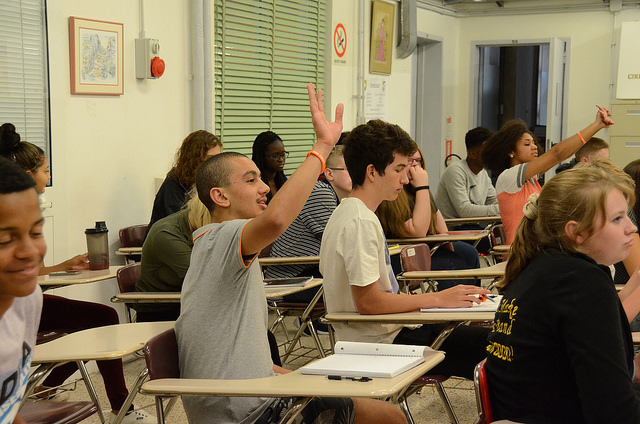The sound of inclusion: Why teachers’ words matter

*Why you should read this: Because it speaks directly to the need for more teachers of color in culturally diverse classrooms. Because “No student (or teacher) leaves their language patterns at the door when they enter a classroom.” Because studies find that teachers favor students who sound like them. VL
By
There isn’t just one way to sound like a scientist, or to sound like a scholar. Scientists and scholars come from a wide variety of backgrounds and speak in different ways, in different accents, dialects and languages.
In classrooms across the U.S., students do too. No student (or teacher) leaves their language patterns at the door when they enter a classroom – even classes like math and science, where language is often seen as secondary.
Read more stories about Latino education in NewsTaco. >>
For the past decade, as professors who study the role of language and culture in education, we’ve been working to help educators understand these dynamics across all subject areas. As the U.S. student population continues to rapidly diversify along cultural and linguistic lines, the demographics of the teacher population remain stable at roughly 82 percent white and predominantly female.
How can educators make sure that teaching and learning in their diverse classrooms is effective and equitable?
Understanding how and why culture and communication matter in all areas of education – from science to the humanities – is a critical starting point.
When students don’t sound the same
Students who speak differently can face a number of challenges at school.
Studies have found that at all levels of education, instructors often favor students who sound like themselves and can be biased against those who don’t. Educators might form negative assumptions about a student’s intelligence and ability based simply on how he or she talks, which can result in lowered expectations, stereotyping and discrimination. Teachers sometimes also send messages, whether consciously or unconsciously, that a student’s language is wrong, dumb or out of place at school.
Do you like stories that reflect authentic Latino life in the U.S.?
Be part of a positive change.
Associate Professor of Language, Literacy, and Culture, University of Maryland, Baltimore County.
Associate Professor of Education, English, and Linguistics, College of William & Mary.
[Photo by USAG Italy/Flickr]

